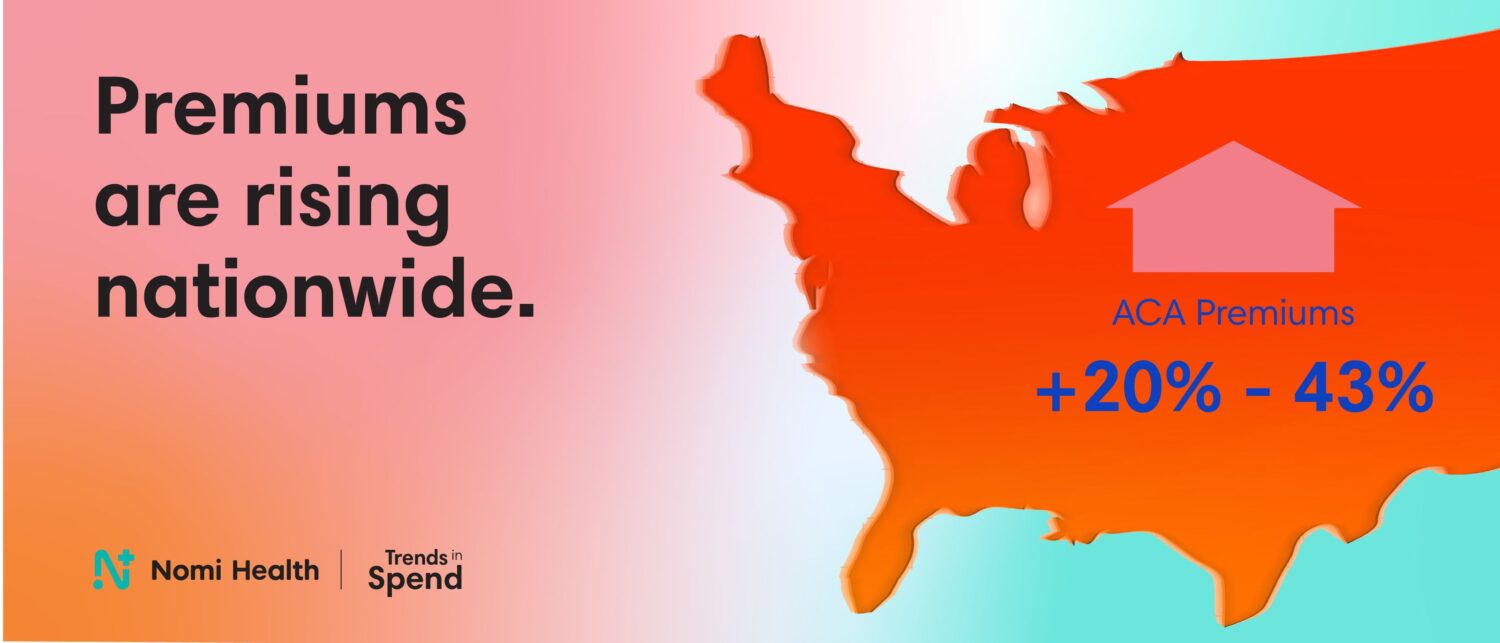
What You Should Know:
– The U.S. healthcare market is showing a stark divergence in cost trends between public and private sectors. While Affordable Care Act (ACA) premiums are spiking well above the industry’s decade-long trend of sub-10% increases, real-world claims data from self-funded employers show costs holding steady at under 5%, according to new data from Nomi Health.
ACA Rate Hikes Driven by Utilization and Risk
ACA insurers across the country are filing for some of the steepest premium increases in recent memory. The justification for these dramatic hikes—which include Molina Healthcare requesting a 41% increase in Florida , United seeking a 43% increase in Georgia , and increases above 18% in Michigan —is centered on rising patient utilization, worsening risk pools, and price inflation.
Examples of the requested premium increases filed by ACA carriers include:
- Florida: Molina Healthcare requests a 41% increase for 2026.
- Georgia: United seeks a 43% increase.
- Texas: United seeks a 39% increase.
- Even traditionally stable Blues plans are pushing for premium increases above 20% in multiple states.
Self-Funded Data Reveals a Stable Market
Nomi Health analyzed 12 months of real-world claims data from its nationwide self-funded employer clients, representing over 20 million lives, to see if the same trends were driving up their rates. The short answer is that they’re not.
The data from 2023–2024 shows a healthcare market that’s far more stable than the ACA premium filings suggest:
- Medical spend rose just 1.75% per member per month.
- Claim volume actually declined 2.17% per 1,000 members.
- Pharmacy spend rose 8.64% per member per month, largely driven by predictable growth in categories like GLP-1s.
This stable pattern holds true even in the states facing the sharpest ACA increases:
- Florida: 0.35% medical cost increase (while ACA carriers seek up to 41%).
- Texas: 1.8% increase (while ACA carriers seek up to 39%).
- Georgia: 4.08% increase (while ACA carriers seek up to 43%).
Warning: ACA Market Stress Could Spill Over
The modest and predictable growth in self-funded plan costs might seem like good news, but stability today doesn’t guarantee smooth sailing ahead. The contrast raises an urgent question of whether ACA market stress could spill over into commercial contracts and push costs higher for everyone.
Spiking ACA premiums could lead to rising uninsured populations in communities where self-funded employer members live and work. When more people lack coverage, providers often shift the costs of uncompensated care elsewhere, typically resulting in higher negotiated rates across all commercial contracts. Industry analysts estimate that each of the 179 million people with job-based coverage could see their annual costs rise by $182 to $485.
Employers who take charge of their data and dollars today are better positioned to manage their costs tomorrow. They need to stay vigilant, spot early signs of spillover (e.g., network contract disputes or hidden spread pricing), and proactively protect their plans from subsidized expenses they didn’t create.

